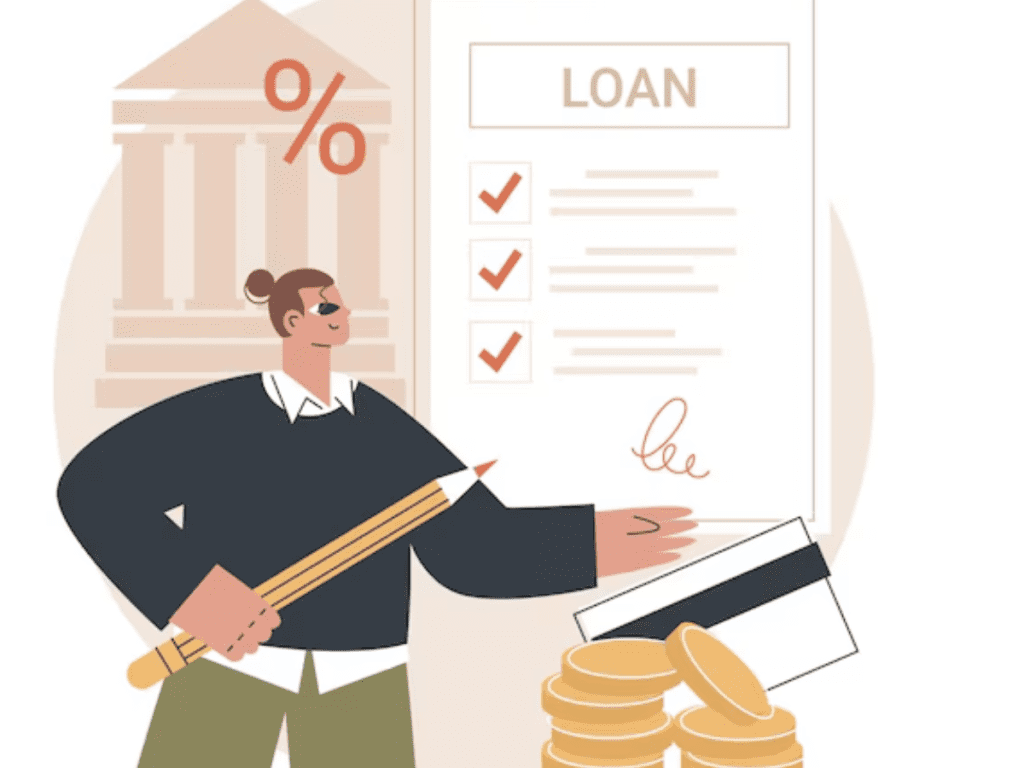Introduction
Home remodeling is a wonderful method of improving the aesthetic appeal and functionality of your dwelling. Whether you’re remodeling your kitchen, redesigning your bathroom, or including an expansion in your living area, home remodeling jobs can be thrilling. Yet these projects are usually accompanied by high costs, and many homeowners ask themselves how they can finance their remolding if they do not have considerable savings.
One of the most common financing options is a personal loan. Personal loans are flexible and can be applied for many different purposes, such as home improvement. In this complete guide, we will discuss if you can apply for a personal loan for home improvement, its advantages, its disadvantages, and other alternatives that might be offered to you. Knowing all of your choices will enable you to make an educated decision before you begin your home renovation project.
What Is a Personal Loan?
A personal loan is an unsecured loan that does not require you to pledge any asset or property as collateral. Lenders offer personal loans based on factors like your creditworthiness, income, and financial history. Unlike home equity loans or lines of credit, which are secured by your home, a personal loan is typically easier and quicker to obtain.
Personal loans are paid back in fixed monthly payments, which is a great choice if you desire stable payments and a definite payment schedule. They have fixed or variable interest rates and can be as little as small amounts for small projects or as much as large amounts for major renovations.
You can use the funds from a personal loan for almost anything, including home improvement projects, debt consolidation, medical expenses, or even vacations. The flexibility of personal loans makes them a popular choice for various needs.
Is It Possible to Use a Personal Loan for Home Renovation?
Yes, you can definitely use a personal loan for home improvements. Personal loans are perfect for homeowners who would like to fund home improvement projects without collateral. Because a personal loan does not necessitate your taking your home as collateral, it has the benefit of faster processing and less complexity compared to other types of secured loans.
Home improvement projects may be as simple as making repairs or as extensive as a major remodel, and a personal loan can fund a variety of costs, such as materials, labor, and even construction permits. If you want to modernize your home’s interior design, replace roofing or flooring, or renovate a kitchen or bathroom, a personal loan can supply the funds.
One of the reasons personal loans are being contemplated by homeowners as a source for home remodeling is the fast process of approval. If your project has to get underway immediately or you are working on a very tight deadline, personal loans allow quicker access to funds than any other financing scheme, which is why they’re best suited for projects with timelines.
Benefits of Personal Loans for Home Remodeling
Personal loans come with various benefits that render them an attractive source of funds for home renovations. Below are some of the most notable advantages you may want to take into consideration:
Quick Access to Funds
Perhaps the most compelling benefit of a personal loan for home remodeling is the ready availability of money. As soon as your loan gets approved, you get paid usually within a few days or even a week. This speed can be instrumental, particularly if you are facing close timelines or require immediate commencement of your renovation project. The quicker processing time enables you to concentrate on finishing your project instead of waiting for lengthy approval times.
Fixed Interest Rates
Personal loans typically have fixed interest rates, so your monthly payments will be constant over the life of the loan. Budgeting is easier with a fixed interest rate because you know what you must pay each month. This is especially helpful when budgeting for a home renovation because it allows you to include loan repayment as part of your overall budget, without concern about changing interest rates.
No Collateral Needed
Personal loans are not secured, so you do not need to pledge any type of collateral, like your house or a vehicle, to be approved for the loan. This is a major advantage if you don’t wish to put your property or assets at risk. In contrast, home equity loans and home equity lines of credit make you use your home as collateral, which may lead to losing your property if you are unable to repay the loan. With a personal loan, your financial security is not attached to your home.
Predictable Repayment Schedule
One other benefit of personal loans is that they have a structured repayment schedule. You’ll receive a fixed sum to repay monthly and when you’ll repay the loan, enabling you to organize your finances in a better manner. The fixity of personal loans is good for individuals who like a precise repayment plan with no unexpected additions.
Flexible Loan Amounts
Personal loans are flexible when it comes to loan sizes. Depending on the lender and your credit score, you can borrow between a few thousand and tens of thousands of dollars. This flexibility ensures that you get the amount of financing you need for your home renovation project without borrowing too much. It’s essential to estimate your project costs carefully before applying for the loan to ensure you borrow the right amount.
Disadvantages of Using a Personal Loan for Home Renovation
Although there are a number of benefits to using a personal loan for home renovations, there are also some disadvantages. Below are some of the disadvantages you need to know before you take out a personal loan for a renovation project:
Higher Interest Rates
One of the greatest drawbacks of taking a personal loan for home remodeling is that the interest rates are higher compared to other types of loans, i.e., home equity loans or lines of credit. Personal loans are not secured, so the lenders bear a higher risk. To compensate for this risk, they can charge a higher interest rate. Based on your credit score and the lender, the interest rate for a personal loan can be significantly higher than for a home equity loan.
Smaller Loan Amounts
Another potential disadvantage of personal loans is that they typically have lower loan limits than home equity loans. If your renovation project is very expensive, a personal loan might not be sufficient. In these situations, you might have to seek alternative financing or use a combination of a personal loan and another type of credit to finance all of your renovation expenses.
Shorter Repayment Terms
Personal loans typically have shorter terms of repayment, between one and seven years. Although this enables you to repay the loan faster, it also implies that your monthly payment will be greater than that of longer-term loans. Greater monthly payments can be stressful on your budget, particularly if you have other financial obligations.
Impact on Your Credit Score
Taking out a personal loan will impact your credit score. Lenders will conduct a hard inquiry into your credit report to assess your creditworthiness. This inquiry can slightly lower your credit score temporarily. Additionally, missing loan payments can significantly damage your credit score, making it more difficult to qualify for other loans in the future.
How to Qualify for a Personal Loan for Home Renovation
When you apply for a personal loan, your lender will consider various factors to decide if you are eligible for the loan and how much interest they will charge. Below are the major factors lenders take into account:
Credit Score
Your credit score is among the most critical criteria lenders apply when assessing whether you qualify for a personal loan. The higher your credit score, the better your prospects of receiving approval for the loan and likely gaining a lower interest rate. Most lenders find borrowers with a credit score of 600 or higher satisfactory, but the lowest rates are usually reserved for borrowers who have scores in excess of 700.
Income and Employment Status
Loan providers desire to have you with a steady and stable source of income so that you can continue to make timely loan payments. You might be required to submit documents like pay stubs, tax returns, or bank statements in order to establish your income and employment status.
Debt-to-Income Ratio
Your debt-to-income (DTI) ratio is another critical consideration that lenders use. Your DTI ratio is your monthly payments on debts compared to your monthly income. A lower DTI ratio means that you would be able to handle more debt, whereas a higher ratio implies that you might not be able to repay the loan. Lenders generally prefer a DTI ratio of 36% or less.
Loan Amount
The size of the loan you wish to borrow is also a factor. If you are taking out a personal loan to fund a home improvement, be sure to estimate the project cost realistically. Borrowing too much or too little may either put your finances under undue pressure or leave you with unwanted debt.
Alternatives to Personal Loans for Home Renovation
If a personal loan is not the best fit for your home renovation project, there are several other financing options available. Each option comes with its own pros and cons, so it’s important to evaluate them based on your needs and financial situation.
Home Equity Loans
Home equity loans enable you to lend against the equity you have accumulated in your home. They generally have lower interest rates than personal loans since they are secured by your property. The catch is that if you fail to make payments on the loan, you may lose your home. Home equity loans are best suited for major renovation jobs.
Home Equity Lines of Credit (HELOC)
A HELOC is a revolving credit line that is used much like a credit card. You can borrow as much as a given limit and you only pay interest on what you borrow. HELOCs carry lower interest rates than personal loans, but also are secured with your home, which makes it vulnerable.
Credit Cards
If your small renovation project does not have excessively high costs, then taking advantage of a 0% or low introductory APR credit card deal might be well worth considering. But it is critical to finish paying off the loan in advance of the 0% promo period ending.
Cash-Out Refinance
A cash-out refinance enables you to refinance your current mortgage for a higher amount than you owe and receive the difference in cash. This is most suitable for homeowners who have high equity in their home and require a higher amount for renovation.
Conclusion
Financing home remodeling through a personal loan can be an ideal solution for your project, particularly if you require quick access to cash without jeopardizing your home. The major advantages of personal loans, including quick processing, fixed rates, and no collateral, render them an excellent choice for most homeowners. Nevertheless, personal loans have their disadvantages, such as higher interest rates and lower loan amounts than home equity loans.
Before you apply for a personal loan, it’s necessary to determine your project expenses, your financial health, and your capability to pay back the loan. If a personal loan is not suitable for you, check for alternative options like home equity loans, HELOCs, or credit cards to find whether they are more appropriate for your needs. Regardless of your choice, be responsible while borrowing and plan your finances well to have a successful home renovation project.

